Track 1
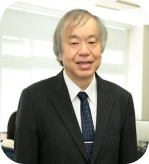 Prof. Haruo Kobayashi (SMIEEE)
Prof. Haruo Kobayashi (SMIEEE)
Gunma University, Japan
Biography: Haruo Kobayashi received the
B.S. and M.S. degrees in information physics from University of Tokyo in
1980 and 1982 respectively, the M.S. degree in electrical engineering from
University of California, Los Angeles (UCLA) in 1989, and the Ph. D. degree
in electrical engineering from Waseda University in 1995. He joined Yokogawa
Electric Corp. Tokyo, Japan in 1982, and was engaged in research and
development related to measuring instruments and mini-supercomputer. In
1997, he joined Gunma University and presently is a Professor in Division of
Electronics and Informatics there. His research interests include
mixed-signal integrated circuit design & testing, and signal processing
algorithms. He has published more than 120 journal papers and 450
international conference papers. Also he has supervised 16 Ph. D. students
and 150 M. S. Students. He received the Yokoyama Award in Science and
Technology in 2003. He is a Senior Member of IEEE.
Speech Title: Revisit to RC Linear Circuit Theory (More)
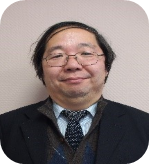 Prof. Ken-ya Hashimoto (FIEEE)
Prof. Ken-ya Hashimoto (FIEEE)
University of Electronic Science and Technology of China
Biography: Ken-ya
Hashimoto was born in Fukushima, Japan, in March 2, 1956.He received the B.S.
and M.S. degrees in electrical engineering from ChibaUniversity, Chiba,
Japan, in 1978 and 1980, respectively, and the D.Eng. degreefrom the Tokyo
Institute of Technology, Tokyo, Japan, in 1989.He joinedChiba University as
a Research Associate in 1980 and retired there as aProfessor Emeritus in
2021. From 2013 to 2015, he was the Director of theCenter for the Frontier
Science with Chiba University. Right after retirement,he moved to the
University of Electronic Science and Technology of China(UESTC), Chengdu,
China, as a Professor. He had Visiting Professor/Researcherpositions in
various institutions, such as the Helsinki University ofTechnology, Espoo,
Finland, in 1998, the Laboratoire de Physique et Metrologiedes Oscillateurs,
CNRS, Besancon, France, in 1998/1999, Johannes KeplerUniversity, Linz,
Austria, in 1999 and 2001, the Institute of Acoustics,Chinese Academy of
Science, Beijing, China, from 2005 to 2006, UESTC from 2009to 2012, and the
Shanghai Jiao Tong University, Shanghai, China, in 2015.He servedas a Guest
Coeditor of the IEEE Transactions on Microwave Theory and TechniquesSpecial
Issue on Microwave Acoustic Wave Devices for Wireless Communications in2001,
and a Publicity Cochair of the 2002, 2015 and 2021 IEEE
InternationalUltrasonics Symposia, an International Distinguished Lecturer
of the IEEEUltrasonics, Ferroelectrics, and Frequency Control (UFFC) Society
from 2005 to2006, an Administrative Committee Member of the IEEE UFFC
Society from 2007 to2009 and from 2014 to 2016, a Distinguished Lecturer of
the IEEE ElectronDevices Society from 2007 to 2009, and a General Cochair of
the 2011 and 2018IEEE International Ultrasonics Symposia.Hereceived IEEE
Fellow in 2005 (now IEEE Life Fellow), the Ichimura IndustrialAward from the
New Technology Development Foundation for Development of OptimalSubstrate
42-LT for Radio Frequency Surface Acoustic Wave Devices in 2015,
TheCommendation for Science and Technology by the Minister of Education,
Culture,Sports, Science and Technology for Research on High Performance
Radio FrequencySurface Acoustic Wave Devices in 2018, and the Distinguished
Service Award fromthe IEEE UFFC Society in 2019.His current
researchinterests include simulation and design of various high-performance
surface andbulk acoustic wave devices, acoustic wave sensors and actuators,
piezoelectricmaterials, and RF circuit design.
Speech Title: Radio Frequency Acoustic Wave Devices in RF Front-End in Mobile Communications --- Why Unavoidable? (More)
 Prof. Yoshiaki Daimon Hagiwara (FIEEE)
Prof. Yoshiaki Daimon Hagiwara (FIEEE)
Sojo University, Japan
Biography: Yoshiaki
Daimon Hagiwara graduated California Institute of Technology (Caltech) in
Pasadena California USA with BS71 with honor, MS1972 and PhD1975. While
working at Sony in Japan during 1975 till 2008, he was engaged in the early
developments of image sensor and the digital camera chip set including the
ADC, DRAM and high-speed Cache SRAM buffer memory chips and digital
processor chips used for the AIBO, PS2 and PS3 cells. He was invited to talk
at IEEE sponsored CCD’79, ECS1980, ESSCIRC2001, ESSCIRC2008 and ISSCC2013
conferences for his works at Sony.
In 1992, he also served as a member of JEDEC memory standardization
committee and also as the IEC TC47 technical committee chair of the
international standard committee (IEC). He also served as the international
program chair and an operational committee member in IEEE EDS sponsored
ICMTS conferences since 1991 till 2008, IEEE ISSCC conferences for which he
served as the ISSCC Asian Committee chair and also as the ISSCC
international technical program (ITC) chair in series. He was also a member
of the PC and OC since 1991 and now an advisory committee member of IEEE
Cool Chips conferences.
In 2008 he founded and worked as the president in the artificial intelligent
partner system laboratory (AIPLAB consortium), a nonprofit research
organization (NPO) registered by Kanagawa prefecture government in Japan.
Since 1998 till 1999, he served as a visiting professor at Prof. C. A. Mead
Lab of the electrical department at Caltech and also at Prof. T.C. McGill
Lab of the applied physics department at Caltech. Since 2003 till 2006, he
served also as a visiting professor at Prof. H. Kobayashi Lab in the
electronic engineering department at Gunma University in Japan.
Since 2009 till 2017, he taught graduate and undergraduate students as a
full professor of the information science department at Sojo University in
Kumamoto city Japan. Currently he is serving as a specially appointed
professor at the president office in Sojo University and also as a member of
the educational committee in Society of Semiconductor Industry Specialists
(SSIS) in Japan. He is a Caltech Distinguished Alumni and an IEEE Life
Fellow.
Speech Title: Artificial Intelligent Partner System (AIPS) with Pinned Photodiode used for Robot Vision and Solar Panel (More)
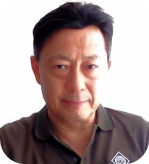 Dr.
Hitoshi Aoki (SMIEEE)
Dr.
Hitoshi Aoki (SMIEEE)
Rohm Semiconductor, Japan
Biography: Dr.
Hitoshi Aoki is a technical adviser at Rohm Co. Itd. He had been a professor
at Teikyo Heisei University and Gunma University in Japan. He has over 35
years of device modeling experience in electronic industries. Prior to his
carrier with Universities, Dr. Aoki founded a modeling company, MoDeCH Inc.
in 2002, where he is now an Executive Advisor Consultant. Previously, he had
been working at some leading companies of electronics in both the U.S.A. and
Japan including the ULSI Research Laboratory of Hewlett-Packard Laboratories
U.S.A, Agilent Technology, and Hewlett-Packard Japan. He authored and
coauthored two books related to compact modeling and more than 130 technical
papers. Dr. Aoki is a senior member of IEEE.
Speech Title: A Unified Model of MIS and Ridge HEMTs for Fast and High-Power Switching Applications (More)
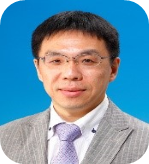 Prof.
Hao San
Prof.
Hao San
Tokyo City University, Japan
Biography: Hao San
received M.S. and Dr. Eng. degrees in electronic engineering from Gunma
University, Japan, in 2000 and 2004, respectively. From 2000 to 2001, he
worked with Kawasaki Microelectronics, Inc. He joined Gunma University as an
assistant professor in the Department of Electronic Engineering in 2004. In
2009, he joined Tokyo City University, and is presently a professor in
Department of Electrical, Electronics and Communication Engineering there.
His research interests include analog and mixed-signal integrated circuits.
Dr. San has been an Associate Editor of IEICE Transactions on Electronics
from 2010 to 2016. He was the treasurer of the IEEE Circuits and Systems
Society Japan Chapter from 2011 to 2012. He is a member of the IEEE, IEICE
and IEEJ.
Speech Title: Low-supply-voltage High-linearity ADC with Dynamic Analog Components (More)
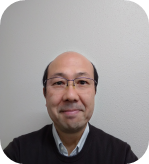 Assoc.
Prof. Tadashi Itoh
Assoc.
Prof. Tadashi Itoh
Gunma University, Japan
Biography: Tadashi
Ito was born in Tokyo, Japan in 1961. He received the degrees of B.Sc. and
M.Sc. in Mathematical Engineering and Information Physics from the
University of Tokyo, Tokyo, Japan in 1984 and 1986, respectively. From 1986
to 1990, he was employed at Yokogawa Electric Corp., Tokyo, Japan. From 1990
to 1995, he was a research associate at the University of Tokyo. He received
the D. Eng. degree from the University of Tokyo in 1995. In 1995, he joined
Gunma University as a lecturer in the Department of Electronic Engineering,
and has been an associate professor from 2010. He has been engaged in
research and development of various measurement systems such as electrical
impedance tomography, application of image analysis, automation of visual
inspection and self-localization for autonomous vehicle.
Speech Title: Principle and Application of Electrical Impedance Tomography (More)
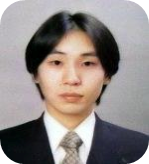 Assoc. Prof. Akito Chiba
Assoc. Prof. Akito Chiba
Gunma University, Japan
Biography: Akito
Chiba received his B.E. degree in electric and precision engineering, and
his M.E. and Ph.D. degrees in the field of electronics and information
engineering from Hokkaido University, Sapporo, Japan, in 2000, 2002, and
2005, respectively. From 2005-2010, he worked with the Lightwave Devices
Project of the New-Generation Network Research Center, National Institute of
Information and Communications Technology (NICT), Koganei, Tokyo, Japan,
where he engaged with Lithium Niobate electrooptic devices and their
applications to optical communication. From 2010-2011, he joined the Faculty
of Engineering, Shizuoka University, Hamamatsu, Shizuoka, Japan, where he
served as a Postdoctoral Fellow for CREST Project of Japan Science and
Technology Agency, and he was involved in the development of a
cathodoluminescent thin film for electron-beam-assisted high-resolution
optical imaging. From 2011 he has been with Gunma University, Kiryu, Gunma,
Japan, and now he serves as an associate professor in the Division of
Electronics and Informatics, Faculty of Science and Technology of the
University. In 2018 he was also a visiting scholar at the Department of
Electrical and Computer Engineering, Henry Samueli School of Engineering and
Applied Science, University of California, Los Angeles. His current research
interests include the field of applied optics, fiber optics, and RF
photonics, utilizing modulation and demodulations for optical communication,
measurement, and RF signal processing. Dr. Chiba is a member of Optica
(formerly the Optical Society (OSA)), IEEE Photonics Society (IEEE-PS), the
Japan Society of Applied Physics (JSAP), the optical society of Japan (OSJ),
and the Institute of Electronics, Information, and Communication Engineering
of Japan (IEICE).
Speech Title: RF parameter estimation using lightwave
modulation (More)
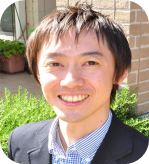 Mr. Atsushi Motozawa
Mr. Atsushi Motozawa
Renesas Electronics Corp., Japan
Biography: Atsushi
Motozawa received B.S. and M.S. degrees in electrical engineering from Gunma
University, Gunma, Japan, in 2006 and 2008, respectively. He joined Renesas
Technology Corp., Takasaki, Japan, in 2008, where he was engaged in
development of an RX analog front end for NFC LSIs. From 2010 to 2014, he
was with Renesas Electronics Corp., Kawasaki, Japan, where he was engaged in
designing sensors and a low power BGR for industrial ICs, and PLLs for
automotive ICs. From 2014, he was with Renesas System Design, Co., Ltd.
Since 2017, he has been with Renesas Electronics Corp., Kodaira, Japan. He
is engaged in designing PLLs for SoCs.
Speech Title: An Attachable Fractional Divider Transforming
an Integer-N PLL Into a Fractional-N PLL with SSC Capability (More)
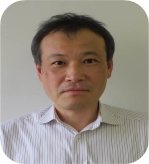 Assoc. Prof. Toru Sai
Assoc. Prof. Toru Sai
Tokyo Polytechnic University, Japan
Biography: Toru Sai
(Member, IEEE) received the B.S., M.E., and the Dr. Eng. degree in
electrical engineering from Chuo University, Tokyo, Japan, in 1986, 1988,
and 2012, respectively. In 1988, he joined the research and development
center of Yokogawa Electric Company, Tokyo, Japan. From 2016 to 2020, he was
a Project Research Associate with The University of Tokyo, Tokyo, Japan.
Currently, he is an Associate Professor at Tokyo Polytechnic University and
a Research Fellow at the Institute of Industrial Science, the University of
Tokyo. His current research interests include DC-DC converters, Gate
drivers, and A/D converters. He received the Best Paper Award in 2019 IEEE
International Future Energy Electronics Conference.
Speech Title: Power Conversion Circuits for Distributed PV
Systems (More)
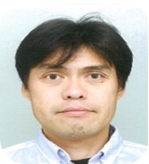 Dr. Kunio Koseki
Dr. Kunio Koseki
National Institute of Advanced Industrial Science and Technology, Japan
Biography: Kunio
Koseki received the B.S. and M.S. degrees in physics from the University of
Tsukuba, Tsukuba, Japan, in 1998 and 2000, respectively, and the Ph.D.
degree in engineering from the Graduate University for Advanced Studies,
Hayama, Japan, in 2005.
He was working for the research and development of various power supplies
with the High Energy Accelerator Research Organization for accelerators and
particle physics experiments from 2005 to 2015.
In 2015, he joined the Advanced Power Electronics Research Center, National
Institute of Advanced Industrial Science and Technology, Tsukuba, Japan, as
a Senior Research Scientist. His current research interests include various
power systems with high-voltage SiC power devices.
Speech Title: Recent Progress in High-Voltage SiC Devices and its Application Development
(More)
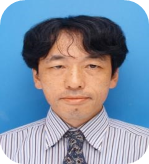 Dr. Nobuhiko Kikuchi
Dr. Nobuhiko Kikuchi
R&D Group, Hitachi Ltd., Japan
Biography: Nobuhiko
Kikuchi received the B.E. and M.E. degrees in precision machinery
engineering from Tokyo University, Japan, in 1988, 1990, and the D.E. degree
in electrical engineering from Tokyo University, Japan, in 2010. In 1990, he
joined Central Research Laboratory, Hitachi Ltd. where he has been working
on the research and development of high-speed optical fiber communication
covering multilevel coding and non-linear impairments, and low-power
environmental sensing systems. His interests span from analogue and digital
circuit design, digital signal processing, embedded MPU systems, and system
integrations. He has published more than 100 patents and 50 international
conference papers as the main author. Dr. Kikuchi is a member of the
Institute of Electrical and Electronics Engineers, Inc. (IEEE), and
Institute of Electronics, Information, and Communication Engineers (IEICE)
of Japan.
Speech Title: Ultra-low Power Multi-Point Remote Sensing
Technology Using Opticlal Fiber Power Supply for Sewage Systems (More)
 Dr. Shiro Hara
Dr. Shiro Hara
National Institute of Advanced Industrial Science and Technology, Japan
Biography: TBA
Speech Title: Minimal Fab Using Half-inch Wafers for Low-volume Device Markets
